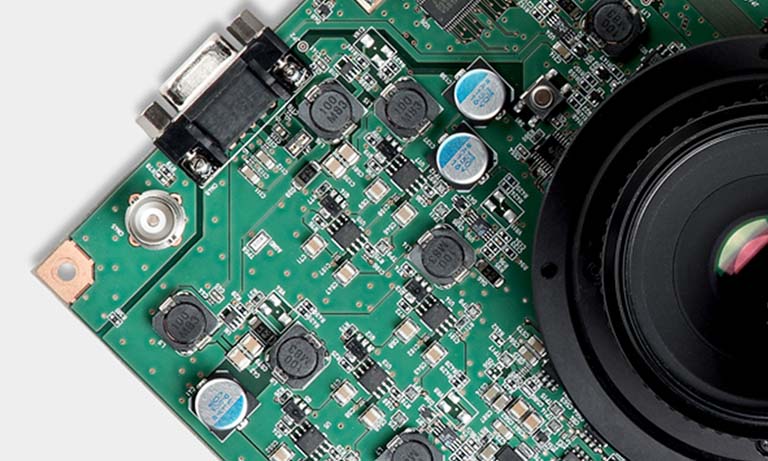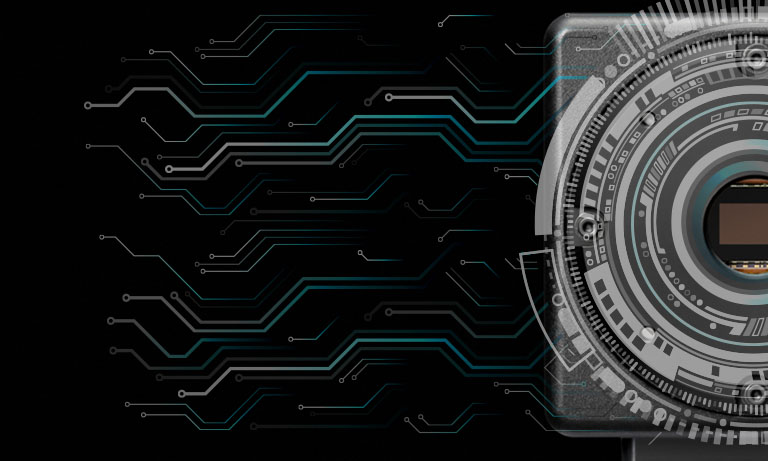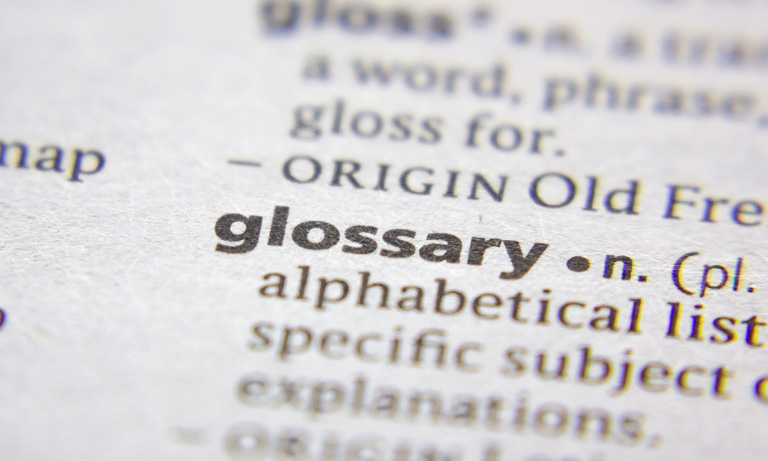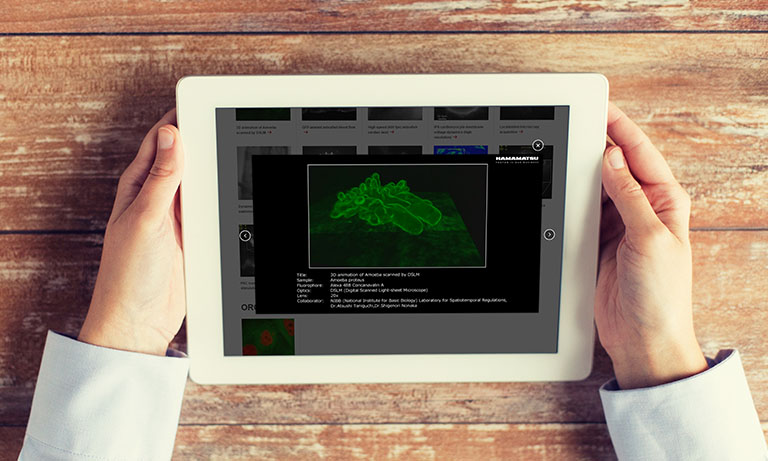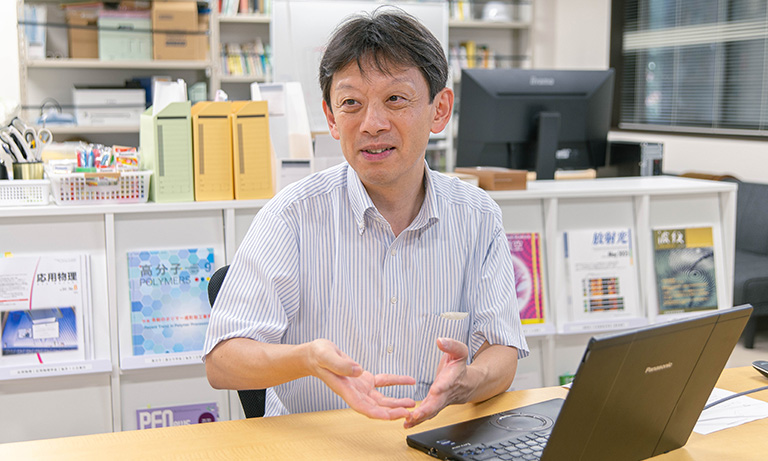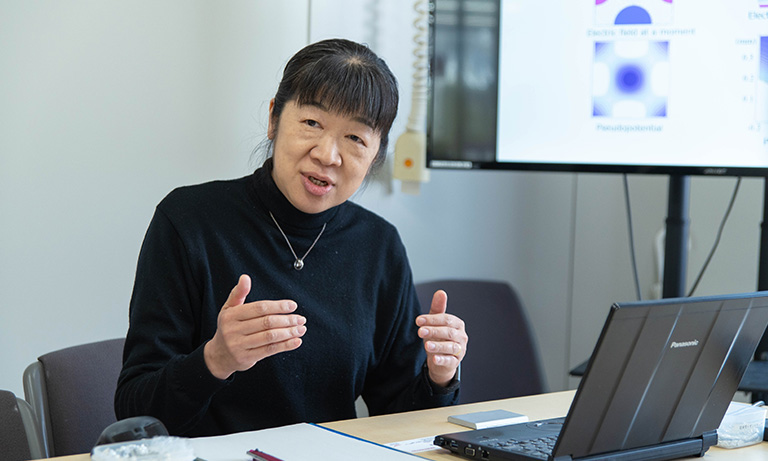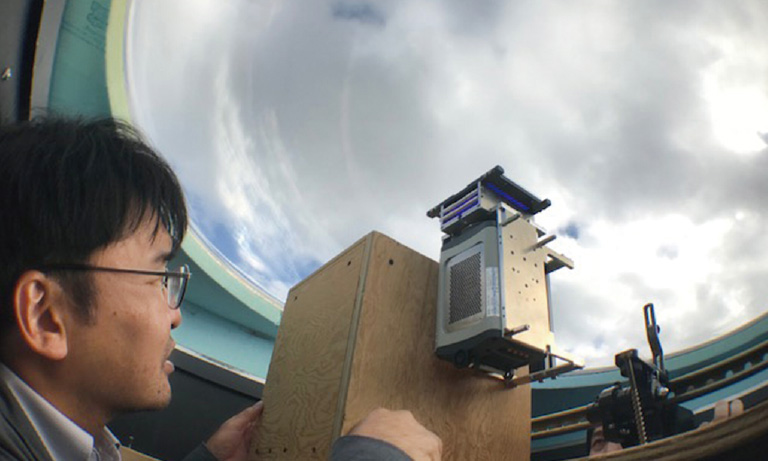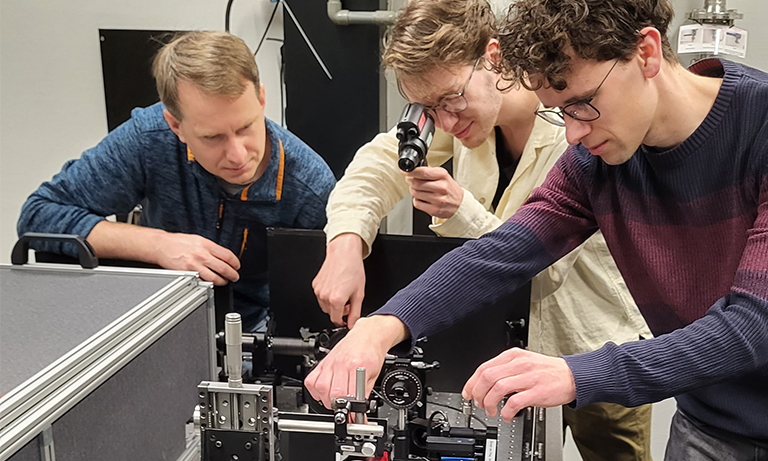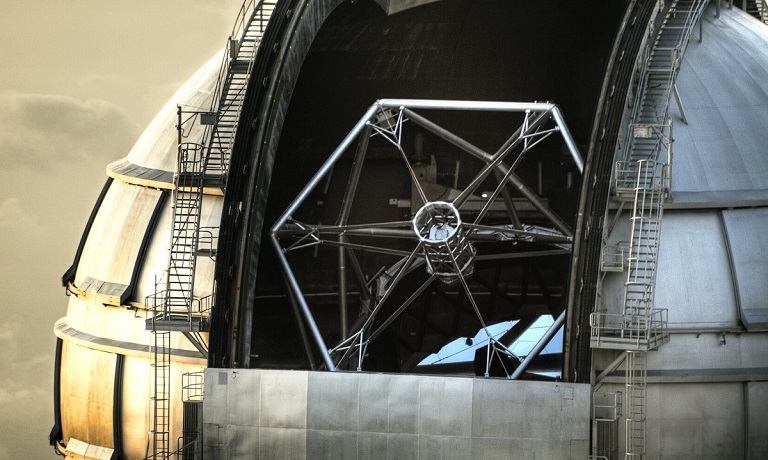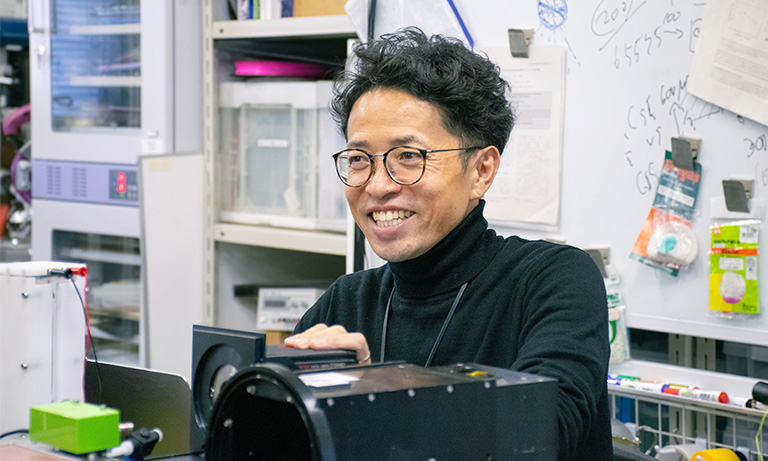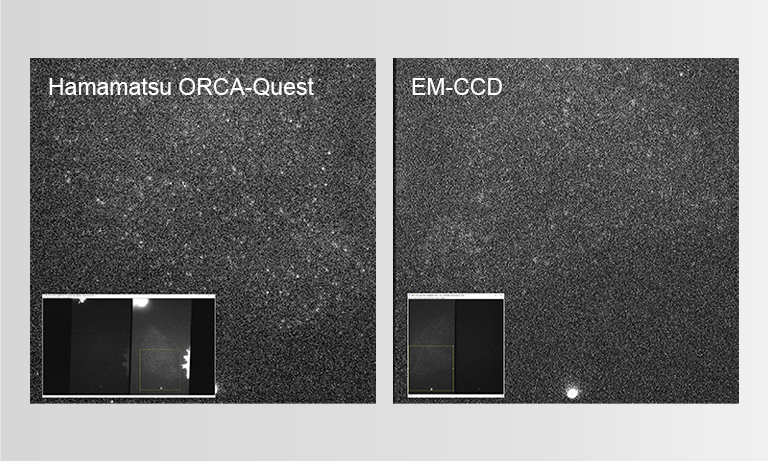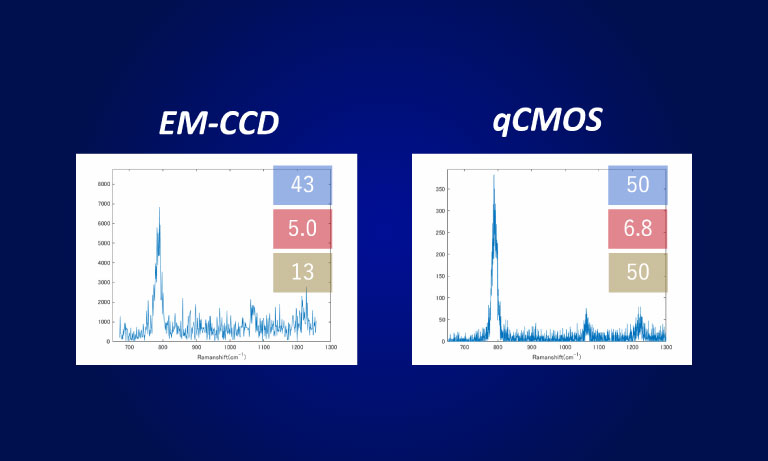Japan (EN)
Select your region or country.
My samples have very low signal, can this camera accurately image my sample?
THIS GUIDE IS FOR:
Biologists that use, or are interested in using, microscope cameras and don’t speak engineering
THIS GUIDE OFFERS:
Clarity on the relevance of camera specs to biological experimentation
SECTIONS:
- What type of camera is this and why should I care?
- How much resolution? How wide a field of view?
- How fast can I image?
- Will I be able to differentiate 1500 molecules from 1475?
- My samples have very low signal, can this camera accurately image my sample?
LISTED IN SPECIFICATIONS AS:
| Hamamatsu listing | Synonyms used by other vendors |
|---|---|
| Quantum efficiency | |
| Readout noise | Read noise |
| Dark current |
Camera specs can give you an indication of whether or not the camera will be able to accurately image your sample, but image quality is dependent on the quality of your sample—as the commercials used to say, “actual results may vary,” and powerful, sensitive electronics cannot always makeup for high background or low contrast. With this caveat, the best indicators of camera sensitivity are a combination of quantum efficiency (QE) and camera noise.
What’s QE?
QE is a measure of how many photons are converted to electrons by the sensor. QE is a function of the camera sensor materials and design and is dependent on the wavelength of the light being detected. In the camera specs, QE is presented as the percentage of photons converted into electrons—i.e. detected—at a particular wavelength, and manufacturers usually can provide QE versus wavelength plots.
Higher QEs generally indicate higher sensitivity, as the likelihood of detecting your signal is increased.
EM-CCDs, QE and eQE
A common misperception is that EM-CCDs are really sensitive because they have a high QE. However, even though the conversion of photons to photoelectrons can be high at the pixel, the multiplication process (impact ionization) in an EM-CCD camera adds an extra noise factor that effectively lowers QE.
The origins of EM noise factor lie in the stochastic nature of the signal amplification process. We’ve written about this in more technical detail here, and the high-level summary is that the EM noise factor effectively lowers the QE across the entire spectra by 50 %. This reduction has been independently observed and noted in the literature by Huang, et al.,1 who find the lower read noise of EM-CCDs to be an advantage in only the lowest light level regimes.
What’s ‘camera noise’?
Camera noise is the amount of noise introduced by the camera. It primarily consists of two components—read noise and dark noise.
Read noise
Read noise is a term used to describe all the sources of noise associated with converting the photoelectrons in a pixel to a digital number. A large part of read noise happens when photoelectrons are converted into a voltage signal by the amplifier, and some occurs during the analog-to-digital conversion.
Lower levels of read noise are particularly important when signal is low, and part of the job of the camera designer is to optimize the system as a whole, balancing sensor performance and readout with read noise in the signal.
Read noise is typically presented as electrons, and is not affected by the wavelength of the signal. However, because the signal starts off as photons, and conversion of photons to photoelectrons, aka the QE, is wavelength dependent, it’s important to convert read noise from electrons to photons when comparing two cameras with similar noise specs but different QEs. When QE is higher and read noise in electrons is equivalent, the camera with higher QE will have lower read noise in photons, indicating the ability to image dimmer signals.
A last note about read noise specs—check whether the specification is “median” read noise or “rms” (root mean squared) read noise. The median value of read noise is typically lower than the rms, making it more attractive as a specification. And for CCDs, where read noise does not vary greatly from pixel-to-pixel, it is not terribly inaccurate. However, the different architecture of the CMOS chip—with conversion from photoelectrons to voltage occurring in parallel at each pixel—means that read noise does vary from pixel to pixel. For this reason, the rms read noise is a more meaningful metric than the median read noise.
Dark noise
Dark noise
Dark noise is statistical variation in the number of electrons thermally generated within the pixel in a photon-independent fashion, and is the electron equivalent of photon shot noise. Dark noise is calculated from the dark current:
Dark current, and therefore dark noise, are temperature dependent, with less noise at lower temperatures. For most biological experiments, dark current and dark noise are negligible over a typical exposure interval of less than five minutes.
Because dark noise is typically negligible, the main noise component coming from the camera that needs to be considered is read noise.
BOTTOM LINE:
- Two specs are required for understanding camera “sensitivity”: read noise and QE.
- For EM-CCD cameras running in EM mode, the effective QE (eQE) is reduced by half across the spectra.
- QE is dependent on signal wavelength, read noise is not.
- For CCD cameras, rms read noise and median read noise are very close to the same value, but for sCMOS cameras, only rms read noise is an informative metric.
- QE and read noise need to be considered together, in the context of your sample and experimental question, when evaluating a camera for sensitivity. For example:
- Do you need to see the difference between two dim signals?
- Do you need to see the difference between bright signals with low contrast?
- Dark current, and the related dark noise, is negligible over typical exposure times for biological experiments.
References
- Huang, F. et al. Video-rate nanoscopy using sCMOS camera-specific, single-molecule localization algorithms. Nat. Methods 10, 653–658 (2013).
- Moran, U., Phillips, R. & Milo, R. SnapShot: Key Numbers in Biology. Cell 141, 1262–3 (2010).
- Confirmation
-
It looks like you're in the . If this is not your location, please select the correct region or country below.
You're headed to Hamamatsu Photonics website for JP (English). If you want to view an other country's site, the optimized information will be provided by selecting options below.
In order to use this website comfortably, we use cookies. For cookie details please see our cookie policy.
- Cookie Policy
-
This website or its third-party tools use cookies, which are necessary to its functioning and required to achieve the purposes illustrated in this cookie policy. By closing the cookie warning banner, scrolling the page, clicking a link or continuing to browse otherwise, you agree to the use of cookies.
Hamamatsu uses cookies in order to enhance your experience on our website and ensure that our website functions.
You can visit this page at any time to learn more about cookies, get the most up to date information on how we use cookies and manage your cookie settings. We will not use cookies for any purpose other than the ones stated, but please note that we reserve the right to update our cookies.
1. What are cookies?
For modern websites to work according to visitor’s expectations, they need to collect certain basic information about visitors. To do this, a site will create small text files which are placed on visitor’s devices (computer or mobile) - these files are known as cookies when you access a website. Cookies are used in order to make websites function and work efficiently. Cookies are uniquely assigned to each visitor and can only be read by a web server in the domain that issued the cookie to the visitor. Cookies cannot be used to run programs or deliver viruses to a visitor’s device.
Cookies do various jobs which make the visitor’s experience of the internet much smoother and more interactive. For instance, cookies are used to remember the visitor’s preferences on sites they visit often, to remember language preference and to help navigate between pages more efficiently. Much, though not all, of the data collected is anonymous, though some of it is designed to detect browsing patterns and approximate geographical location to improve the visitor experience.
Certain type of cookies may require the data subject’s consent before storing them on the computer.
2. What are the different types of cookies?
This website uses two types of cookies:
- First party cookies. For our website, the first party cookies are controlled and maintained by Hamamatsu. No other parties have access to these cookies.
- Third party cookies. These cookies are implemented by organizations outside Hamamatsu. We do not have access to the data in these cookies, but we use these cookies to improve the overall website experience.
3. How do we use cookies?
This website uses cookies for following purposes:
- Certain cookies are necessary for our website to function. These are strictly necessary cookies and are required to enable website access, support navigation or provide relevant content. These cookies direct you to the correct region or country, and support security and ecommerce. Strictly necessary cookies also enforce your privacy preferences. Without these strictly necessary cookies, much of our website will not function.
- Analytics cookies are used to track website usage. This data enables us to improve our website usability, performance and website administration. In our analytics cookies, we do not store any personal identifying information.
- Functionality cookies. These are used to recognize you when you return to our website. This enables us to personalize our content for you, greet you by name and remember your preferences (for example, your choice of language or region).
- These cookies record your visit to our website, the pages you have visited and the links you have followed. We will use this information to make our website and the advertising displayed on it more relevant to your interests. We may also share this information with third parties for this purpose.
Cookies help us help you. Through the use of cookies, we learn what is important to our visitors and we develop and enhance website content and functionality to support your experience. Much of our website can be accessed if cookies are disabled, however certain website functions may not work. And, we believe your current and future visits will be enhanced if cookies are enabled.
4. Which cookies do we use?
There are two ways to manage cookie preferences.
- You can set your cookie preferences on your device or in your browser.
- You can set your cookie preferences at the website level.
If you don’t want to receive cookies, you can modify your browser so that it notifies you when cookies are sent to it or you can refuse cookies altogether. You can also delete cookies that have already been set.
If you wish to restrict or block web browser cookies which are set on your device then you can do this through your browser settings; the Help function within your browser should tell you how. Alternatively, you may wish to visit www.aboutcookies.org, which contains comprehensive information on how to do this on a wide variety of desktop browsers.
5. What are Internet tags and how do we use them with cookies?
Occasionally, we may use internet tags (also known as action tags, single-pixel GIFs, clear GIFs, invisible GIFs and 1-by-1 GIFs) at this site and may deploy these tags/cookies through a third-party advertising partner or a web analytical service partner which may be located and store the respective information (including your IP-address) in a foreign country. These tags/cookies are placed on both online advertisements that bring users to this site and on different pages of this site. We use this technology to measure the visitors' responses to our sites and the effectiveness of our advertising campaigns (including how many times a page is opened and which information is consulted) as well as to evaluate your use of this website. The third-party partner or the web analytical service partner may be able to collect data about visitors to our and other sites because of these internet tags/cookies, may compose reports regarding the website’s activity for us and may provide further services which are related to the use of the website and the internet. They may provide such information to other parties if there is a legal requirement that they do so, or if they hire the other parties to process information on their behalf.
If you would like more information about web tags and cookies associated with on-line advertising or to opt-out of third-party collection of this information, please visit the Network Advertising Initiative website http://www.networkadvertising.org.
6. Analytics and Advertisement Cookies
We use third-party cookies (such as Google Analytics) to track visitors on our website, to get reports about how visitors use the website and to inform, optimize and serve ads based on someone's past visits to our website.
You may opt-out of Google Analytics cookies by the websites provided by Google:
https://tools.google.com/dlpage/gaoptout?hl=en
As provided in this Privacy Policy (Article 5), you can learn more about opt-out cookies by the website provided by Network Advertising Initiative:
http://www.networkadvertising.org
We inform you that in such case you will not be able to wholly use all functions of our website.
Close

